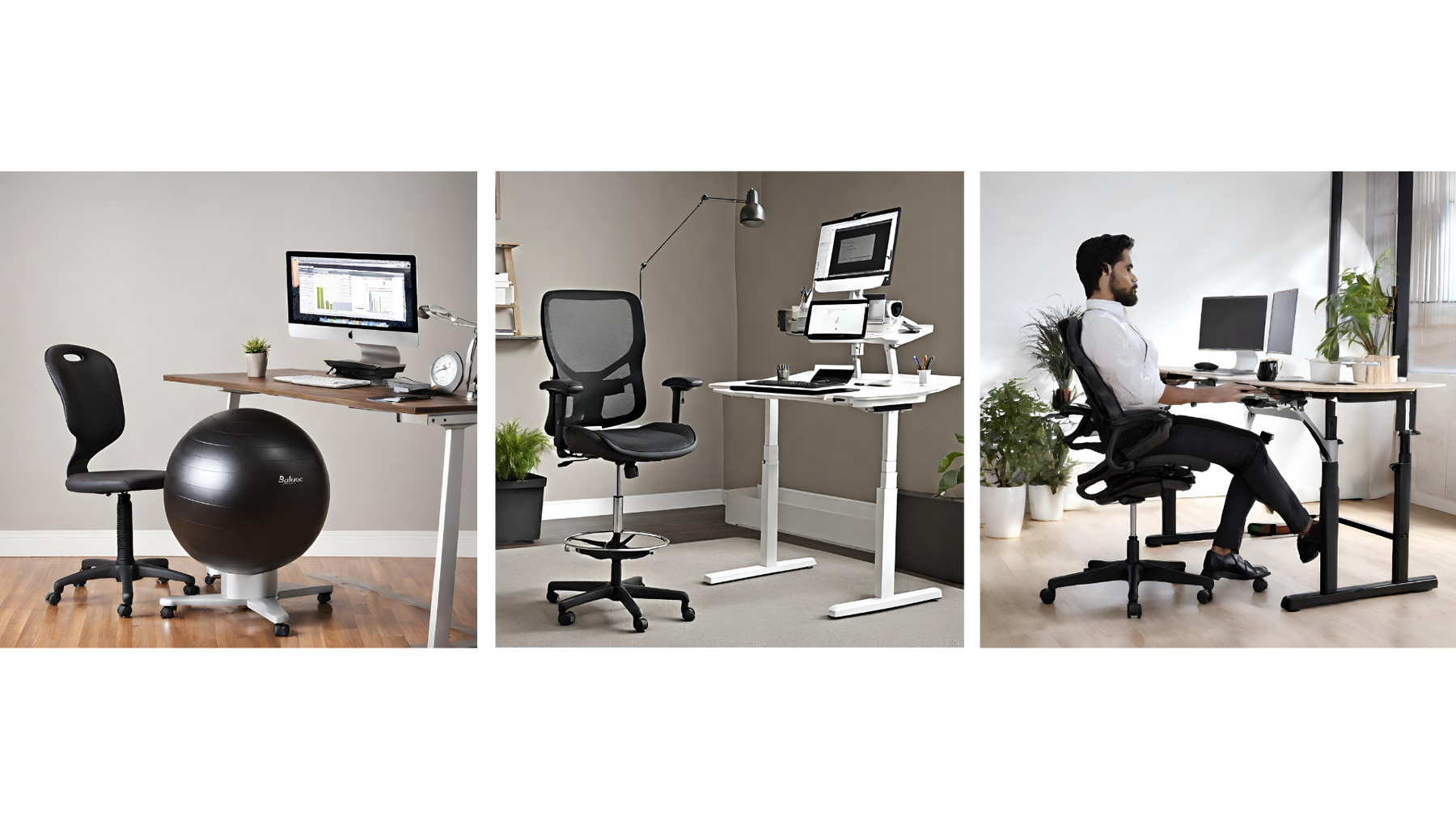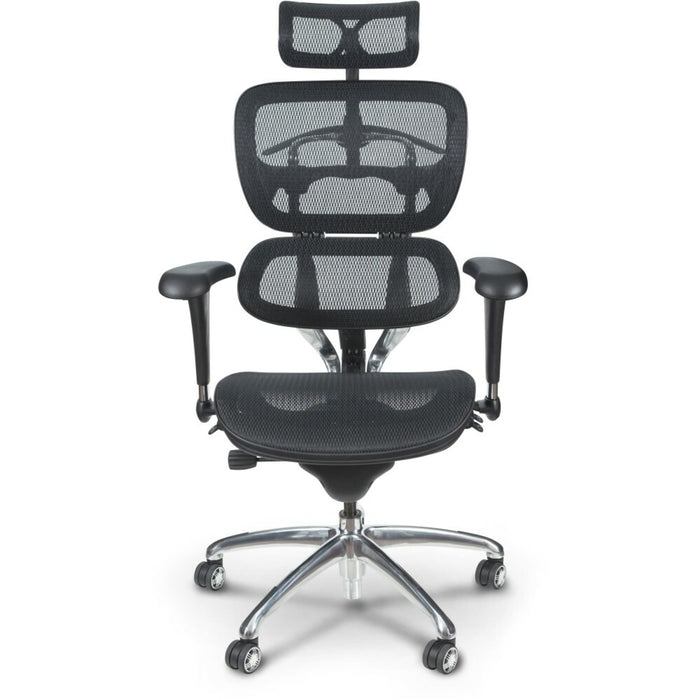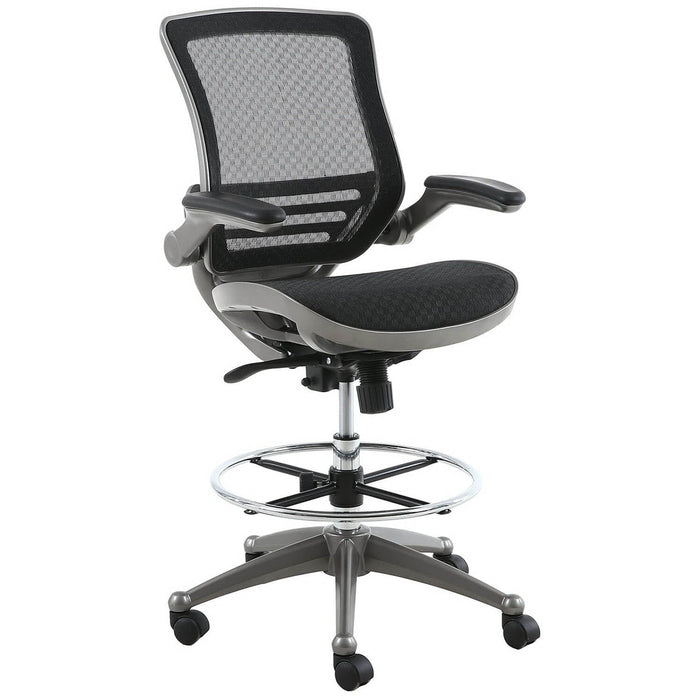
The Ultimate Sit-down: Best Types of Ergonomic Chairs for Standing Desks
I remember when my co-worker Sarah decided to switch to a standing desk. At first, she was really into it and would always talk about how great it was for her health. But after a few weeks, she started feeling tired and less enthusiastic about it. I remember her saying, "I never thought I'd say this, but I can't do this anymore; I miss sitting!" Luckily, she was able to get an ergonomic chair that worked well with her standing desk, and she was able to take full advantage of her new setup.
The world of work has evolved rapidly, and with it, our workspaces. Gone are the days when the only thing looming overhead was a fluorescent office light; today, it’s the challenge of blending health and productivity seamlessly. Enter the standing desk—a symbol of wellness in the workplace. And while standing is the new sitting, sometimes, you just need to take a load off. But what chair could possibly match the majesty of your towering desk?
Why Standing Desks Became a Revolution
In recent years, standing desks have become synonymous with a proactive approach to health in the office. This isn't just a fad; a study in the Journal of Physical Activity & Health demonstrated that standing burns around 0.15 more calories per minute than sitting (1). When you accumulate that over weeks and months, the health benefits become significant.
Moreover, standing desks cater to the modern understanding of ergonomics—ensuring that workplace environments contribute to the well-being and productivity of the worker. But as many who have made the switch will tell you, standing all day comes with its challenges. Your legs tire, your feet might hurt, and occasionally, you reminisce about the good old days of sitting. This is where ergonomic chairs tailored for standing desks come in.
Deep Dive into the Types of Ergonomic Chairs
-
Tall Task Chair: This is the no-nonsense choice for many. Adjustable in many different ways, this chair offers a straightforward solution to match the level of your standing desk. Additionally, it offers the benefits of lumbar support, which is crucial for long hours.
-
Example: MooreCo Butterfly Ergonomic Executive Chair

-
Balance Ball Chairs: Initially, these might look like they're more at home in a gym. But, for the adventurous spirit, they're an excellent choice. They promote micro-movements, ensuring you're not entirely static even when seated. These subtle shifts can help with circulation and even contribute to burning some additional calories.
-
Example: Gaiam Classic Balance Ball Chair
-
Saddle Chairs: An interesting fusion between standing and sitting, saddle chairs place you in a position that's reminiscent of horseback riding (sans the horse, of course). These chairs foster an open hip angle and encourage an upright, active posture.
-
Example: Mykolme Saddle Chair
Price $289 (Buy on Branch)

-
Drafting Chairs: Historically chosen by architects and designers due to their height and adjustable features, these chairs have found a broader audience. With footrests and a design that complements standing desks, they're a practical choice.
-
Example: Harwick All Mesh Heavy Duty Drafting Chair

-
Leaning or Perch Stools: A bridge between standing and sitting, these innovative designs allow you a leaning posture. They reduce pressure on the legs and spine, offering a middle-ground solution for those who want to oscillate between sitting and standing effortlessly.
-
Example: MooreCo Elate Perch Stool

Why Your Chair Matters More Than You Think
In the push towards healthier working habits, the quality of your seating is paramount. A poor choice can lead to a plethora of health issues—back pain, poor circulation, and even digestive problems (2). The importance of integrating ergonomic principles into both standing and sitting cannot be overstated. When you marry the benefits of a standing desk with an ergonomic chair designed for it, you’re setting the stage for optimum work efficiency and health.
Points to Ponder Before Making a Purchase
- Flexibility: How versatile is the chair or stool? Can it adapt to various postures and tasks?
- Material & Build: What materials are used? Durability is key, especially given the dynamic nature of standing desk environments.
- Personal Comfort: As ergonomic as a chair might be on paper, personal comfort varies. Always trust your body’s feedback.
Three Actionable Takeaway Points
- Invest in Research: Before splurging on the first ergonomic chair you find, spend time understanding the different types of chairs, their features, and how they align with your needs.
- Prioritize Health: Don’t compromise on your well-being. A chair might have aesthetic appeal, but if it doesn’t support good posture, it’s not worth it.
- Test Before Purchase: If possible, take the chair for a “test sit.” Much like trying out a new car, you want to get a feel for your potential new seat.
In the end, the synergy between a standing desk and its chair counterpart represents the future of workplace wellness. As the saying goes, "Behind every great standing desk is an even greater chair." Okay, maybe that's not a real saying, but it ought to be.
References:
- Reiff, C., Marlatt, K., & Dengel, D. R. (2012). Difference in caloric expenditure in sitting versus standing desks. Journal of Physical Activity & Health, 9(7), 1009-1011.
- Robertson M, Amick BC 3rd, DeRango K, Rooney T, Bazzani L, Harrist R, Moore A. The effects of an office ergonomics training and chair intervention on worker knowledge, behavior and musculoskeletal risk. Appl Ergon. 2009 Jan;40(1):124-35. doi: 10.1016/j.apergo.2007.12.009. Epub 2008 Mar 11. PMID: 18336791.

